Below is the top ten best ways to be secure
Use Strong, Unique Passwords
- Create Complex Passwords: Use a mix of letters, numbers, and special characters.
- Unique Passwords for Different Accounts: Avoid reusing passwords across multiple sites or applications.
- Password Managers: Consider using a reputable password manager to securely store and manage your passwords.
Enable Two-Factor Authentication (2FA)
- 2FA: Always enable two-factor or multi-factor authentication for your accounts, adding an extra layer of security beyond just a password.
Keep Software and Systems Updated
- Regular Updates: Install updates for your operating systems, applications, and firmware on your devices as soon as they become available.
- Patch Management: Regularly check for and apply security patches to close vulnerabilities.
Be Aware of Phishing Attempts
- Email Security: Be cautious about opening attachments or clicking on links from unknown or suspicious sources in emails.
- Verify Contacts: If unsure about an email’s authenticity, contact the sender through a different communication method to verify.
Use Security Software
- Antivirus Software: Use reputable antivirus software and ensure it’s regularly updated.
- Firewalls: Enable firewalls on your devices and network to block unauthorized access.
Secure Your Home Network
- Strong Wi-Fi Encryption: Use WPA3 encryption for your Wi-Fi network. If not available, WPA2 is a minimum.
- Router Security: Change the default administrator password on your home router to a strong, unique password.
Back Up Your Data Regularly
- Regular Backups: Make regular backups of important data and store them securely, ideally in multiple locations (e.g., cloud storage and an external hard drive).
Secure Mobile Devices
- Lock Devices: Use PINs, passwords, or biometric locks to secure your smartphones and tablets.
- App Permissions: Regularly review and limit unnecessary app permissions.
Educate Yourself and Others
- Stay Informed: Keep abreast of the latest cybersecurity threats and safe practices.
- Security Training: Consider formal cybersecurity training to understand potential security threats and how to mitigate them.
Limit Personal Information Online
- Social Media: Be mindful of the information you share on social media and use privacy settings to control who sees your information.
- Personal Data: Be cautious about where and to whom you provide personal and financial information online.
